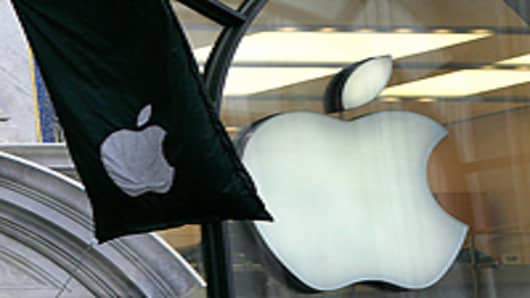The two factors are unrelated, at least for now. Any problems affecting Apple’s supply chain in Japan will not affect finished products for weeks, analysts say. But some investors fear that Apple’s challenges in meeting demand for a product like the iPad 2 will simply get worse in the months to come as some critical components are delayed.
Many companies would be happy to have Apple’s problem of high demand for their products. And on Monday, Apple’s shares bounced back, gaining more than 2.5 percent; on Tuesday, they gained another 0.56 percent.
But Apple, like other technology companies, is at risk of being buffeted by the unfolding crisis in Japan. Every major computer and consumer electronics maker relies on components that directly or indirectly come from Japan. Apple’s success, though, combined with its recurring difficulties in meeting the demand for some its hottest products, including the iPad and iPhone, have prompted investors to single out the company.
“Fear is affecting Apple in particular,” said Gene Munster, an analyst with Piper Jaffray. “This is a company with tight supplies, and the fear is that they will get even tighter.”
Figuring out the precise impact on Apple of the disruptions in Japanis more art than science. The company, which declined to comment for this article, is intensely secretive about its supply chain. While other companies typically don’t talk about whom they buy parts from, analysts say Apple takes secrecy particularly seriously and will cut off any supplier that it suspects of being loose-lipped.
That has left analysts piecing together bits of information dribbling out of Japan about certain parts or suppliers. In a series of sometimes-conflicting reports, they have focused on a handful of iPad components.
On Monday, for example, analysts highlighted a new concern: 300-millimeter wafers, which are silicon disks used to manufacture essential chips for the iPhone and iPad. A factory operated by Shin-Etsu in Shirakawa, in northern Japan, produces at least 15 percent of the world’s supply of the wafers, said Gus Richard, an analyst with Piper Jaffray, and is not likely to become operational for a long time.
“Will it affect Apple today or tomorrow?” Mr. Richard said. “No. But everyone is worried about those wafers. At some point, chip makers will run out.”
Last week, the focus was elsewhere. On Thursday, IHS iSuppli, which is known for its “teardowns” of new Apple products — taking them apart as soon as they come out to analyze their components — identified five parts that it said could be affected. They included the flash storage, memory chips, an electronic compass, batteries and glass used in the touch screen.
Underscoring the challenges with its analysis, iSuppli said that the glass was only likely to come from Japan, and that it might have failed to identify other Japanese components in the device.
Other analysts said last week that they were concerned about the supply of BT resin, a product used to produce circuit boards for iPhone and iPad chips, manufactured primarily by a Mitsubishi facility in Japan that was temporarily shut down.
“Part of it is a guessing game,” said Andy Hargreaves, an analyst with Pacific Crest Securities. Mr. Hargreaves was among those who played down the impact of the crisis on Apple. Mr. Hargreaves noted that Apple would be first in line to receive components like flash storage and memory chips. He also noted that the prices of those components, while likely to rise, were still lower than in 2010.
Like many others, though, Mr. Hargreaves was cautious. “The biggest thing we don’t know is how long will the disruptions last,” he said.
With supplies for the iPad 2 and the iPhone tight, even a short-lived disruption could have an effect. Apple has not said how many of the new iPads it has sold since it went on sale on March 11. Analysts estimated that the number was around 500,000 in the first weekend. After that, sales slowed to a trickle, even as demand remained strong.
Apple stores have been resupplied daily, but in small amounts. Mr. Munster said a large group of people lined up overnight at the Apple store in New York’s meatpacking district one day last week. Only the first 20 people were able to buy an iPad. Another Apple store, at the Mall of America in Minneapolis, received just six iPads on a recent day, while a Target store received 15, he said.
On Apple’s own Web site, the waiting time for new orders has increased to four to five weeks, from two to three weeks. On Friday, the company plans to begin selling the iPad 2 in some two dozen countries. While Apple is certain to have earmarked units for the international debut, no one outside of the company knows how many. Analysts said they were unsure whether serving a bigger market would worsen supply problems.
Apple has faced challenges in meeting demand as far back as 2004, when it first released the iPod Mini. The iPhone has been in tight supply since Apple introduced it in 2007. And only in the most recent quarter, Apple managed to end the backlog for the original iPad.
“This is a problem that Apple has had since 2004,” Mr. Munster said. “They are doing a better job than before, but they still can’t make enough.”
Mr. Munster predicted that the delay for online orders of the iPad 2 would extend to six or seven weeks by summer.


